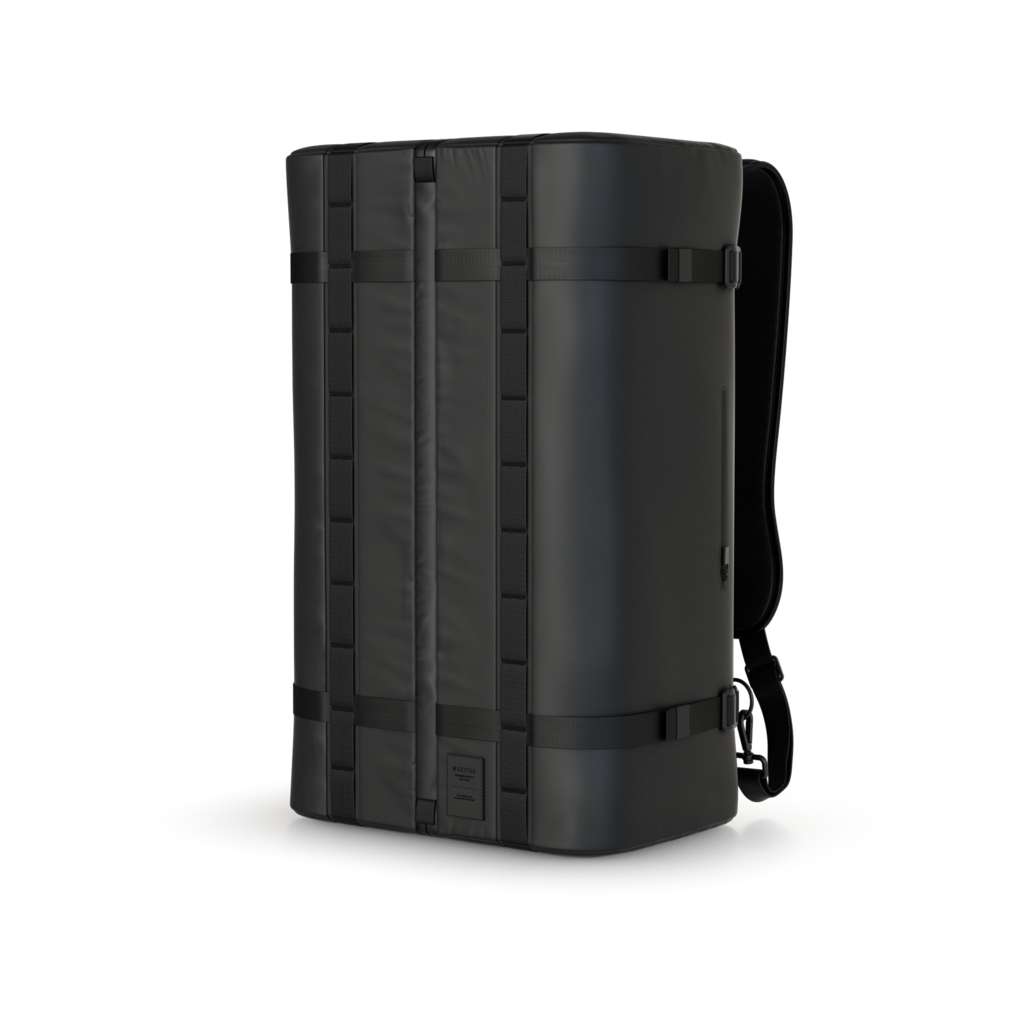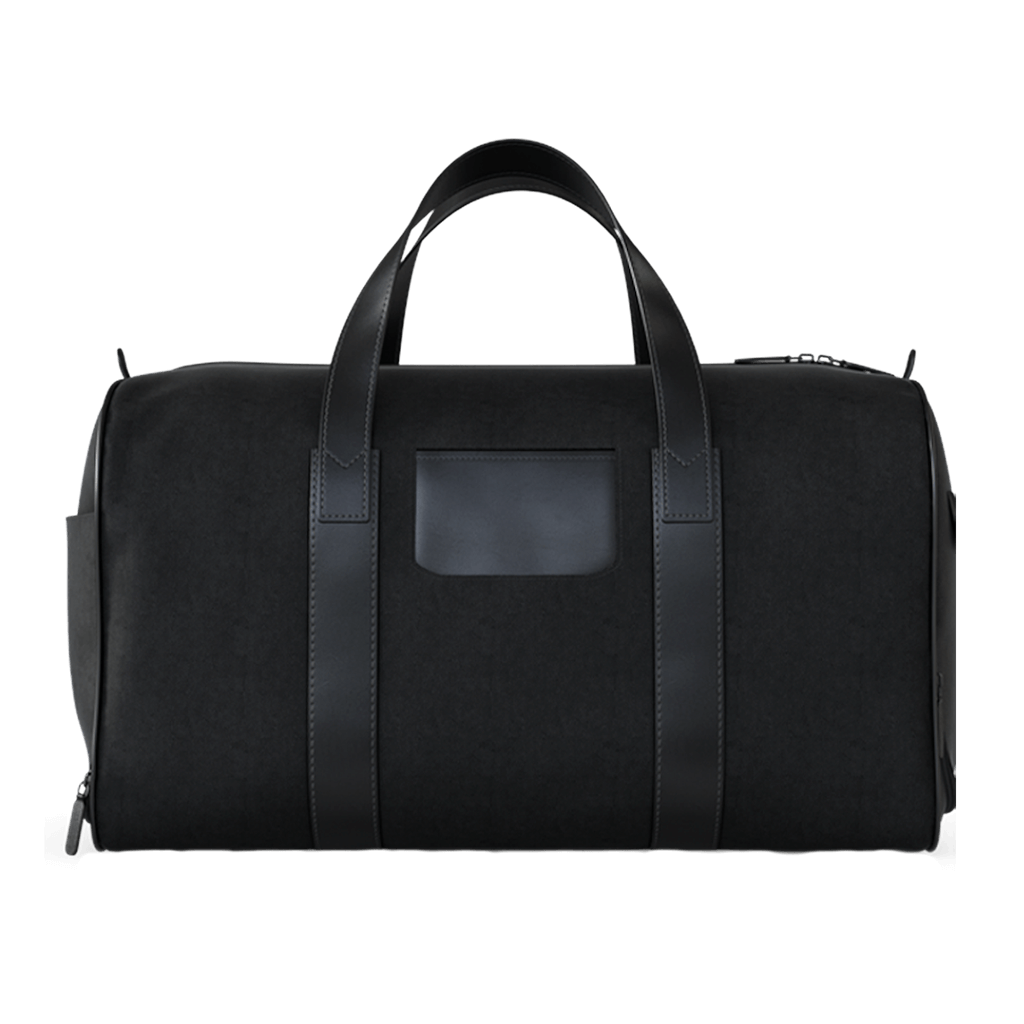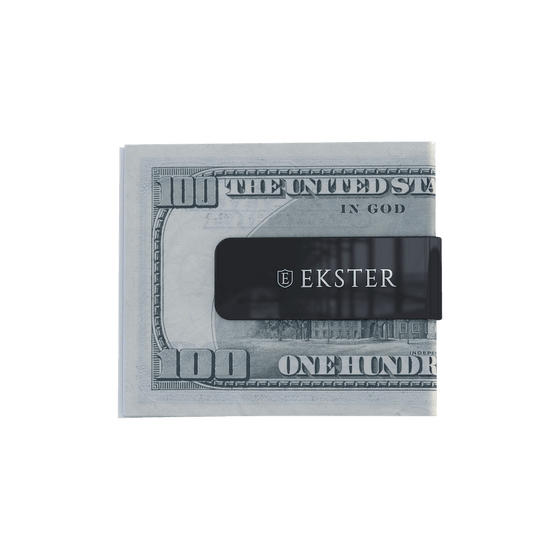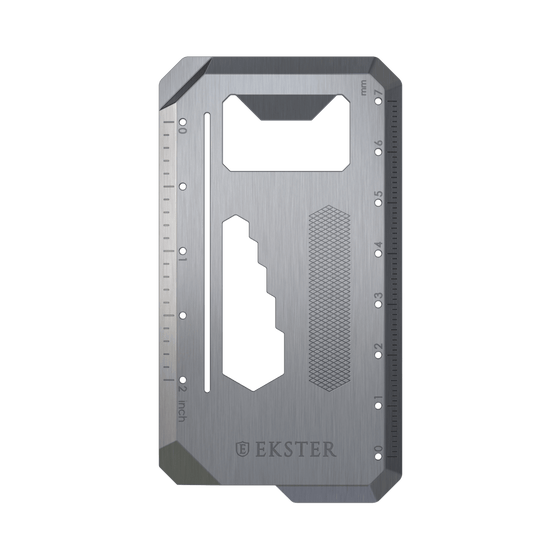How to Use a Money Clip, Made Simple

We humans are pretty inventive when it comes to carrying our belongings safely and securely. Purses, cases, satchels, and bags have turned up across archeological sites around the world, showing that we’ve always had a knack for storing our stuff and taking it on the go.
We’ve obviously come a long way since our cave-dwelling days, and now we enjoy amazing tech like smart wallets and aluminum cardholders to securely carry our essential items each day.
In fact, we’ve become so advanced that many of us are dialing down the complexity of our carrying cases and looking for the most simple possible solution. The minimalist trend has caught on in recent years, proving that we’d prefer to keep things clean and uncomplicated in a world where information overload is the norm.
The money clip is a perfect example of an old-school, no-frills accessory that has one specific job and does it very well. We’re seeing lots of folks try out money clips for the first time, and the results have been overwhelmingly positive thus far.
Still, there are some questions left unanswered regarding cash clips, so let’s take a moment to investigate the details of this classic accessory and provide a thorough explanation of how to use them the right way. Let’s go!

Money Clip Basics And History
Like so many trends in the finance and fashion worlds, money clips have seen peaks and valleys in terms of popularity. Banknotes were not very common until the turn of the 18th century, and coins were still the most prevalent form of currency for years after.
Banks and governments printed paper notes to fund war efforts, and everyday folks became accustomed to the look and feel of these bills. It took until the early 20th century for someone to develop the wise idea of a dedicated accessory to carry cash: the money clip.
It’s a simple idea: a piece of metal, plastic, or other durable material folded in half with the aim of wedging cash or cards between the two sides. Your belongings should be held securely in place, and there are numerous styles and designs to choose from.
While money clips had their heyday back in the mid 20th century, they’ve since faded as digital money takes center stage. However, we’re seeing yet another comeback now that consumers are looking for wallet alternatives.
Now that minimalism is in vogue, we’ll likely see the money clip stick around for a while.

Upsides To Carrying A Clip
Like with any aspect of personal storage and organization, we play a game of tradeoffs when choosing a money clip over a more traditional wallet.
The clear advantage to a cash clip is the slim, low-profile form factor. You can load a clip up with bills, easily slide it into your front pants pocket or jacket pocket, and go about your day without a worry in the world.
Now that the health hazards of a fat back-pocket wallet have been revealed, the money clip has a broader appeal than ever before. Research clearly shows that sitting on a wallet for an extended duration can lead to spine problems and chronic back pain. It’s no wonder why everyone is leaving the old-fashioned wallet on the shelf.
There is also a security benefit to carrying a cash clip rather than a rear-pocket wallet. Since you’ll likely store your clip in a jacket or front pants pocket, it’s not going to be such an easy target for pickpockets as you navigate busy areas.
Finally, a cash clip can help minimize and simplify your daily carry. Way too many of us are overloaded with random cards, receipts, and other nonsense that burden our wallets for no good reason. A clip makes it impossible to overcarry and makes life that much easier.
What To Carry In Your Cash Clip
Now let’s talk about how to properly load up your money clip when first starting out.
Begin by doing a full cleanse of your wallet, whether it’s a classic leather bifold or a velcro and nylon case you’ve been carrying since high school. Empty it completely and lay the contents on the table for easy organization.
Be ready to part ways with any lingering receipts, hotel room keys, or business cards that no longer serve a purpose. You’ll be surprised to see how much ends up in the trash can.
From there, organize key items into categories, including cash, debit cards, and essential forms of identification. Be honest with yourself—what cards do you really use on a daily basis, and which ones can you leave at home without running into problems?
With your money clip at the ready, organize your bills into ascending order, starting with the lowest denominations at the center of the stack. You’ll want to have at least a couple hundred dollars with you for a day in the city or a night out, so don’t go unprepared.
Give your wad a hard fold and ensure that the cash is firmly wedged between the two prongs of the money clip. Tap it against a table and flick it with some force to guarantee the money isn’t going anywhere.
You can also squeeze a debit card and a credit card into your cash clip if you’ve got the space. Make sure you place it directly in the center of your cash fold so that it doesn’t break loose at any point. For a typical day, you probably only really need a driver’s license and a credit card.
Don’t overload your clip! It could cause damage to the device, and this could compromise the security of your belongings. Opt for bigger bills and fewer cards to maximize efficiency.
Finally, determine where you’ll keep your money clip and practice taking it out to quickly retrieve cash or cards. It will take some time to master the quick-draw technique, but you’ll figure it out soon enough. Before long, you’ll fall in love with the cash clip lifestyle and won’t look back!

Find The Clip That’s Right For You
Not all cash clips are made with the same materials or level of craftsmanship, so be discerning in your purchase. Try to avoid clips made from plastic or malleable metal. The clip should be built to last and maintain its “grip” for years down the road.
The price point is usually a good indicator of a cash clip’s quality, so don’t balk if you end up spending a bit more than you expected. This is an investment in your health, the protection of your essential items, and your overall style.
While you may want to rid yourself of that big and bulky back-pocket wallet, it’s worth buying a secondary device to hold more cash and cards if the occasion calls for it.
You may be on a long journey that demands a bigger loadout, so look for a smart wallet or phone folio that has you covered with more storage. You should still try to avoid sitting on a wallet, no matter how slim it may be, so keep it in a different pocket if possible.
Conclusion
Money clips are back and more popular than ever, so get on board with the trend. Once you learn the ropes and master the money clip techniques, you’ll wonder why it took so long to leave your old wallet behind.
P.S. If you're interested in purchasing an Ekster Cardholder, consider getting the Cash Clip Backplate add-on (pictured below).

FAQs
What is a money clip and how does it work?
A money clip is a minimalist accessory designed to hold cash, cards, and IDs securely in place. It’s typically made of metal or durable materials and functions by clamping bills and cards between two prongs, offering a slim and simple alternative to traditional wallets.
How do you use a money clip?
To use a money clip, fold your cash in half and place it between the clip’s prongs. You can also add a few cards, such as a driver’s license and credit card, in the center of the fold for easy access. Keep it in your front pocket for maximum convenience and security.
What should I carry in my money clip?
Carry only the essentials—cash, a few cards (like your ID or credit card), and possibly a couple of bills for flexibility. Keep the clip slim by avoiding unnecessary cards or receipts that can cause the clip to lose its grip.
Why is a money clip better than a wallet?
A money clip is more compact and lightweight than a traditional wallet, making it ideal for those who prefer a minimalistic lifestyle. It also reduces the risk of back pain caused by sitting on a bulky wallet and is harder for pickpockets to target in your front pocket.
How do I choose the best money clip?
Look for a high-quality money clip made from durable materials like stainless steel or aluminum. Avoid cheap plastic clips that may wear out quickly. A well-built clip will securely hold your cash and cards and last for years.
Sources:
https://www.readersdigest.co.uk/lifestyle/fashion-beauty/the-evolution-of-the-handbag
http://content.time.com/time/specials/packages/article/0,28804,1914560_1914558_1914593,00.html




























